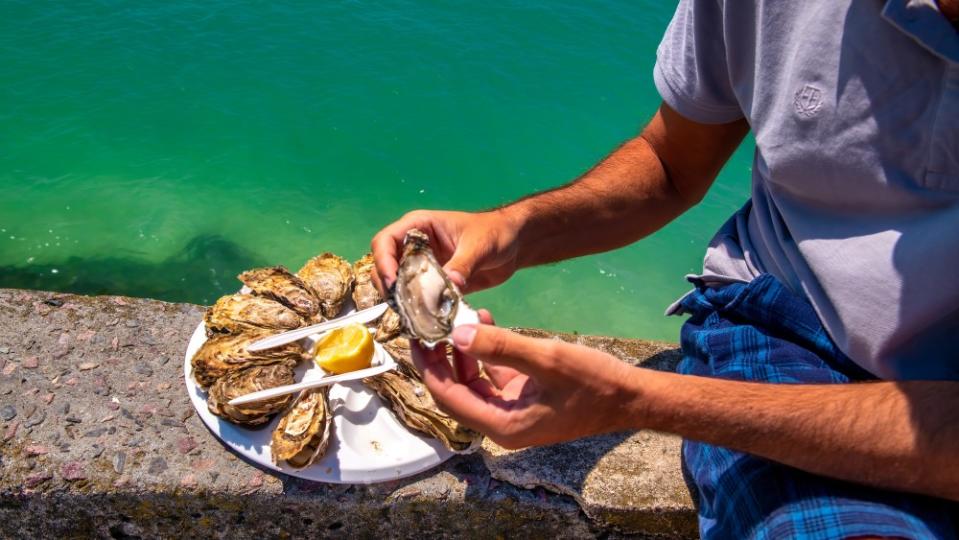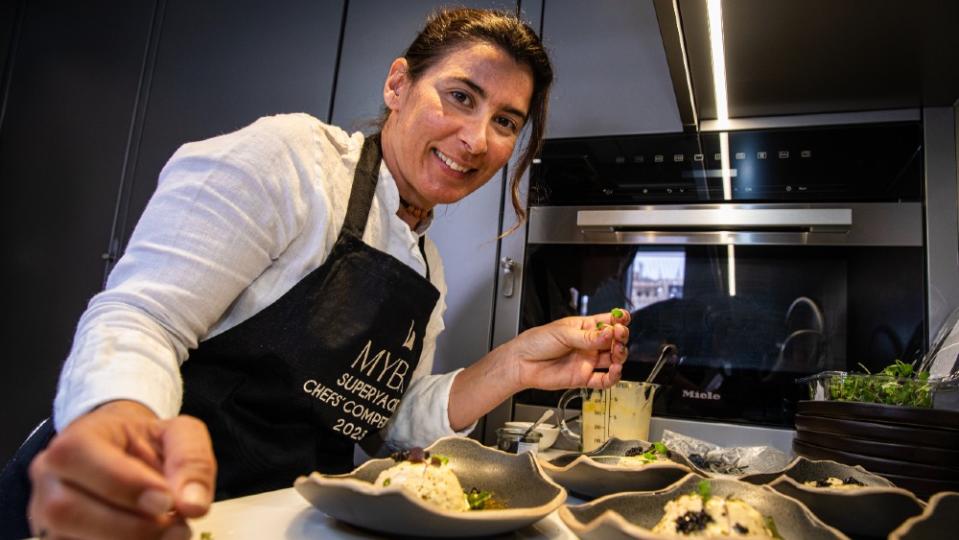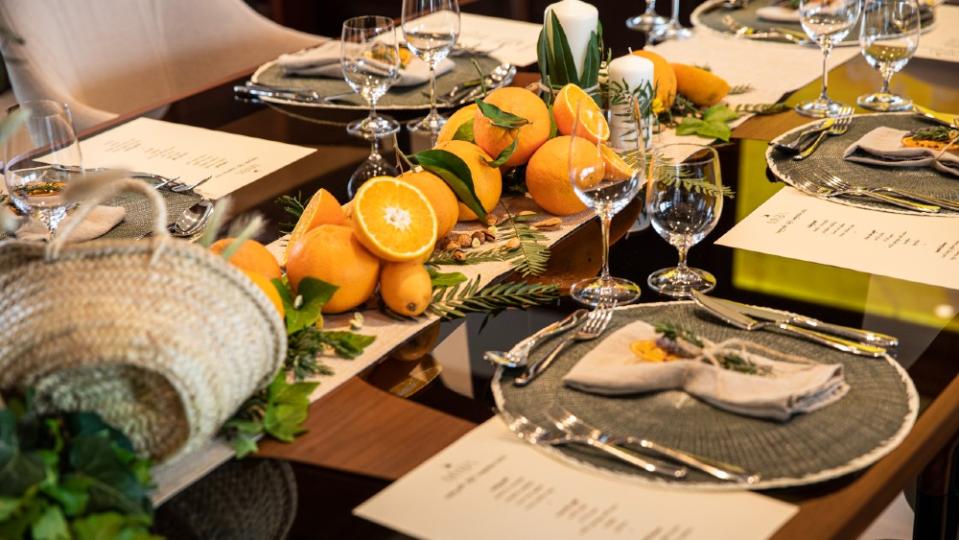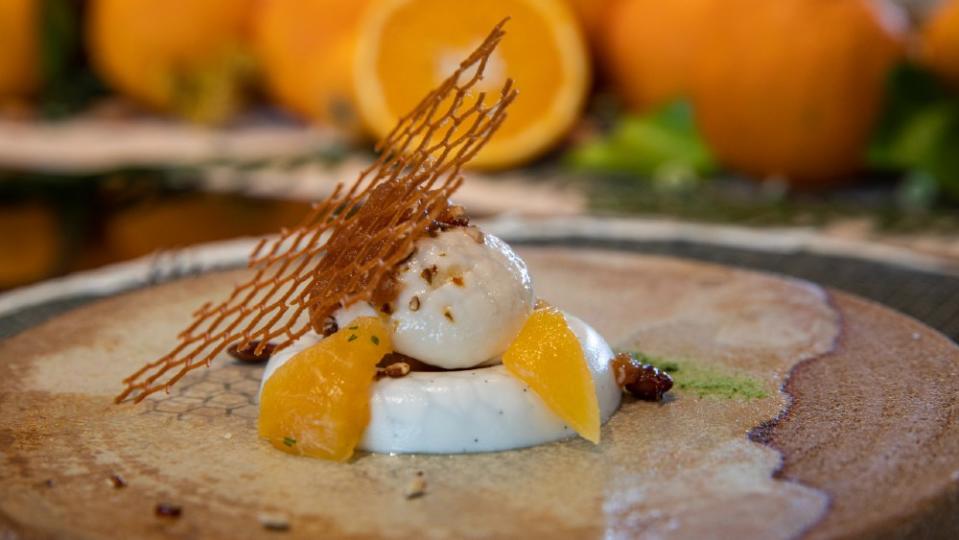Why Superyacht Chefs Are Plucking Their Own Oysters and Foraging for the Food They Make

Thinking on your feet, working in small spaces, and accommodating a growing list of food intolerances all help to make the job of a superyacht chef one of the toughest gigs at sea. But the biggest challenge can be the provisioning of ingredients, especially in remote, hard-to-reach places.
Natalia Sánchez, chef aboard Viva La Vida, says having to source top-quality produce wherever she is in the world is the most demanding—and interesting—part of her job. “Most of the time we’re in a different location each week, so I adapt my menu according to the location and try to use as much local produce as possible,” she told Robb Report.
More from Robb Report
This Sleek 164-Foot Superyacht Has a Massive Pop-Up Screen in Front of Its Swimming Pool
This Bonkers 264-Foot Catamaran Concept Looks Like a Spaceship for the High Seas

From seafood and fruit to vegetables and herbs, sourcing wild, seasonal and fresh produce has become so intrinsic to yachting that this year’s Superyacht Chef’s Competition at the annual MYBA Charter Show at Barcelona’s Marina Port Vell adopted “Foraged Fare” as its theme. The rules mandated a minimum of two foraged ingredients per course, with all dishes cooked and served on the yacht. Among the five judges were Michelin-starred chefs Antonio Mellino of Quattro Passi, Romain Fornell of Caelis and Shaun Rankin of Grantley Hall.
Sánchez, who grew up foraging in the Spanish countryside with her family, won first place in the “29m and under” (95 feet) yacht-length category. For her appetizer, she used royal sea urchin and dehydrated anemone that the crew dived for in a local reef. She followed with halibut al papillote with seasonal asparagus and wild dill for the main course and lavender cream-filled profiteroles with sage foam for dessert. Her menu was praised by the judges for its elegant simplicity.
“Often, less is more, and that’s what we enjoyed about Sánchez’s menu,” says private chef and competition judge, Mike Jennings. “If you look at two and three Michelin-starred restaurants today, they’re serving a piece of beautifully cooked fish with a garnish next to it and little else. It’s about respecting the quality of ingredients.”

Foraging has boomed in popularity since 2020, with professional chefs and enthusiastic amateurs alike heading into the countryside to gather mushrooms, herbs, and berries to bolster their plates and bypass the supply restrictions that occurred during the pandemic. Though sourcing for the superyacht’s galley is largely back to a pre-Covid regularity, the appetite for foraging has remained.
“Reconnecting with the food that grows all around us is such an important skill,” says professional forager Emma Gunn, who lists sea buckthorn, wild garlic, and rosehip among her favorite foraged foods. “It makes us aware of what is available, and therefore care more about the environment.”
Autumn is the best season for foraging, though the most common year-round wild edibles are roots, nuts, seeds, and depending on location, seafood and seaweed. More seasoned foragers among the superyacht set hunt for sorrel, which carries hints of sour green apple, and pepper dulse, a small, red algae that packs a powerful fishy, peppery, garlic punch.

Chef Mary San Pablo aboard superyacht Marala used foraged sea purslane and scallop roe in her appetizer for her first-place-winning menu in the “51m and over” (167 feet and above) yacht category. “The best dish in the competition that reached the goal was San Pablo’s carabinero prawn starter,” says Jennings. “Everything about that dish—the texture and balance of flavor—was a real wow factor.”
San Pablo followed with quail, wild garlic, mushrooms, and wild rosemary for her main course, and a dessert of roasted apricot, caramelized lavender, and thyme sugar tart served with glazed rosehip, mulberry and lavender syrup.
Another reason chefs love to forage is that it forces improvisation. When Juan Carlos Gutièrrez, chef aboard Hemabejo, discovered he would be taking part in the MYBA competition just five days before the event, he turned to Barcelona’s abundance of mushrooms and wild fish for inspiration. He also brought Asian flavors inspired by his time in Japan and served a Ponzu Daikon Sauce made from seaweed with his tuna sashimi starter. For dessert, he combined local honey with nísperos, a seasonal Spanish fruit, all of which won him first place in the “30m to 50m” (90 to 164 feet) category.

“Cooking haute cuisine in a superyacht galley requires organization and inventiveness,” says Gutièrrez. “In a big port like Barcelona you can find plenty of ingredients, but in somewhere like the Greek islands or the Caribbean you need to work with what’s available and getting the most out of the land is the best way to do that.”
In this new form of haute cuisine, the world is literally your oyster. “Foraging as a superyacht chef is the best way to discover new ingredients and to keep creating new dishes,” says Gutièrrez. “It keeps you on top of your game.”
Best of Robb Report
Sign up for Robb Report's Newsletter. For the latest news, follow us on Facebook, Twitter, and Instagram.

 Yahoo Sports
Yahoo Sports 